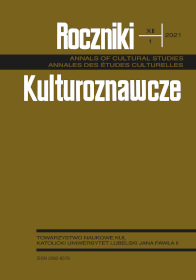Aesthetics and the Arts of Engagement
Abstract
In an earlier study I suggested that the study of aesthetics, rather than being derived from first principles, would benefit, in particular, from knowledge of contemporary developments in the arts. Over the last two centuries, social, technological, and cultural changes have had a transformative effect on the arts and on aesthetic experience. Such fundamental changes called for a new account that would explain them and rationalize their occurrence. I proposed integrating aesthetic experience into a perceptual field that combined the creative, appreciative, objective (i.e. focused), and performative functions in what I called aesthetic engagement. Over the past half century, trends in the arts and their experience have moved more emphatically away from discrete objects and disinterested contemplation, fulfilling the transition to an aesthetic of active engagement of artist, appreciator, object and performer in an experiential aesthetic field
References
Berleant, Arnold. l964. “The Sensuous and the Sensual in Aesthetics.” The Journal of Aesthetics and Art Criticism, 23, no. 2 (Winter): l85 l92. Reprinted in Re-thinking Aesthetics: Rogue Essays on Aesthetics and the Arts. Aldershot: Ashgate, 2004.
Berleant, Arnold. l969. “Surrogate Theories of Art.” Philosophy and Phenomenological Research, 30, no. 2 (December): l63 l83. http://dx.doi.org/10.1761.3/M6958P. Later included in The Aesthetic Field: A Phenomenology of Aesthetic Experience. Rochester, MN: Lisa Loucks Christenson Publishing. 2002.
Berleant, Arnold. l970a.“Aesthetics and the Contemporary Arts.” The Journal of Aesthetics and Art Criticism, 29, no 2 (Winter): l55 l68. Reprinted in: Arnold Berleant. Re-thinking Aesthetics: Rogue Essays on Aesthetics and the Arts. Farnham, UK & Burlington, VT: Ashgate, 2004.
Berleant, Arnold. l970b. The Aesthetic Field: A Phenomenology of Aesthetic Experience. Springfield, Ill.: C.C. Thomas.
Berleant, Arnold. 2004. Re-thinking Aesthetics: Rogue Essays on Aesthetics and the Arts. Farnham, UK & Burlington, VT: Ashgate.
Polish translation: Prze-myśleć estetykę. Niepokorne eseje o sztuce. Translated by Maria Korusiewicz and Tomasz Markiewka. Kraków: Universitas, 2007.
Berleant, Arnold. 2010. Sensibility and Sense: The Aesthetic Transformation of the Human World. Exeter: Imprint Academic. Ch. 9: “The Negative Aesthetics of Everyday Life”; Ch. 10: “Art, Terrorism, and the Negative Sublime.
Polish translation: Wrażliwość i zmysły. Estetyczna przemiana świata człowieka. Translated by Sebastian Stankiewicz. Kraków: Universitas, 2011.
Bourriaud, Nicholas. 2002. Relational Aesthetics. Translated by Simon Pleasance and Fronza Woods with Mathieu Copeland. Dijon: Les presses du réel.
Kant, Immanuel. Critique of Judgment (1790). South Bend: Infomotions, 2000, First Book: Analytic of the Beautiful.
Mandoki, Katya. 2007. Everyday Aesthetics: Prosaics, The Play of Culture and Social Identities. Aldershot: Ashgate.





